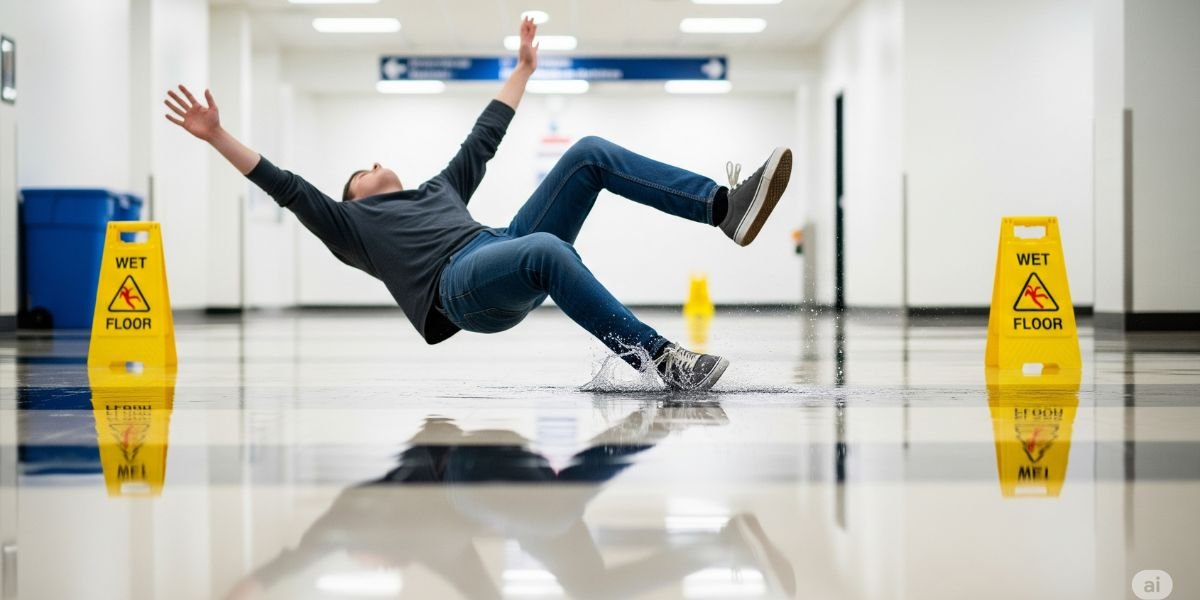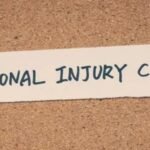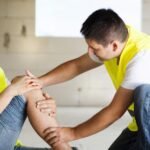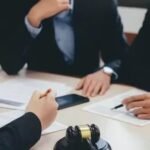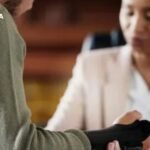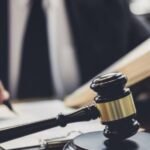Slip and fall accidents are a surprisingly frequent occurrence in public spaces, often dismissed as minor incidents. Yet, they can result in severe and life-altering injuries, from broken bones and head trauma to chronic pain and disability. While an accident might seem like a simple misstep, these incidents are frequently the result of a preventable hazard—a failure on the part of a property owner or manager to maintain a safe environment. When this negligence occurs, the guidance of a Queens slip and fall lawyer can be essential for victims seeking justice. By understanding the root causes of these accidents, we can better appreciate the responsibilities involved and the steps that can be taken to prevent them, thereby protecting the public from needless harm.
Spills and Poor Housekeeping: An Immediate Danger
One of the most common and immediate threats in public places is the presence of spills and other poor housekeeping practices. A simple puddle of water near a drinking fountain, a spilled soft drink in a grocery aisle, or a recently mopped floor without a visible warning sign can create a treacherous condition.
Common examples of these hazards include:
- Liquid Spills: A puddle of water, a spilled soft drink, or residue from leaking refrigerators.
- Improper Cleaning: Recently mopped floors that lack clear and visible warning signs.
- Scattered Debris: Loose boxes, fallen items, or other materials left in walkways.
- Overstocked Merchandise: Products left haphazardly on the floor instead of being properly shelved.
The danger is often not immediately apparent, as the surface may appear dry until a foot makes contact. A property owner’s duty to address these issues promptly is paramount. Their negligence in cleaning up a spill or tidying a mess can have serious consequences. A swift response, combined with clear signage, is a simple yet crucial step to mitigate the risk of injury.
Weather-Related Hazards and the Duty to Act
Weather-related conditions are a major contributor to slip and fall incidents, especially during the winter months. Snow, ice, and slush on sidewalks, entryways, and parking lots create slick surfaces that are difficult to navigate safely. Property owners have a clear responsibility to manage these hazards by clearing walkways, applying salt or sand to icy patches, and placing floor mats at entrances to prevent water and slush from being tracked indoors. A failure to take these reasonable precautions can put people at significant risk. When an injury occurs because a property owner has neglected their duty to maintain a safe path, the victim may have legal options. In such cases, a Bronx slip and fall attorney may be necessary to help navigate the legal complexities and hold the responsible party accountable for their negligence, ensuring that victims can seek compensation for their injuries and losses.
Structural and Maintenance Deficiencies
Beyond temporary hazards, many slip and fall accidents are rooted in long-term structural and maintenance issues. Uneven or cracked sidewalks and poorly maintained parking lot surfaces can easily cause someone to lose their footing. Inside buildings, worn-out, loose, or torn carpeting, as well as broken or missing floor tiles, create dangerous conditions. Inadequate lighting in stairwells, hallways, and parking lots can make it impossible for people to see these hazards, turning a simple path into a perilous one. Property owners are obligated to conduct regular inspections and repairs to ensure their premises are safe. When they fail to do so, and an injury results, the consequences can be severe. An individual injured due to such negligence may need the expertise of a Queens slip and fall lawyer to build a strong case. Furthermore, if the dangerous condition stems from shoddy work or poor safety practices, a Queens construction accident lawyer might also be involved to address the root cause of the hazard, highlighting the interconnectedness of property safety and quality workmanship.
The Hazards of Insufficient Lighting
Poor lighting is a silent yet pervasive threat that contributes to countless slip and fall incidents. While a property owner’s negligence in maintenance is often the focus, the simple failure to provide adequate illumination can be just as dangerous. Dimly lit areas, such as stairwells, parking garages, and walkways, obscure potential hazards that would be easily visible in daylight.
Specific dangers created by poor lighting include:
- Hiding subtle hazards like loose floor tiles, cracks in pavement, or wet spots.
- Obscuring changes in elevation, such as unmarked single steps or curbs.
- Casting deceptive shadows that can mask the true depth or shape of a surface.
- Impeding the eyes’ ability to adjust when moving from a bright to a dark space.
A person’s eyes may not adjust quickly enough when transitioning from a bright area to a dark one, making it difficult to spot these dangers. The responsibility to maintain proper lighting is a fundamental aspect of premises safety, and when this duty is neglected, the results can be catastrophic. An individual’s ability to safely navigate a public space is contingent upon being able to see where they are going, and without proper lighting, that basic right is compromised, often leading to avoidable injuries.
Conclusion: A Shared Responsibility for Safety
The various factors contributing to slip and fall accidents—from temporary spills to long-term structural defects—underscore a fundamental truth: these incidents are rarely true “accidents.” They are, more often than not, the foreseeable result of negligence on the part of property owners and managers. Whether it is a failure to clear ice from a sidewalk, repair a broken step, or simply ensure a parking lot is adequately lit, the consequences can be life-altering for the injured party. While individuals have a responsibility to be mindful of their surroundings, property owners have a legal and moral obligation to provide an environment that is free from known and preventable hazards. By upholding these duties and understanding the potential dangers, we can work toward creating safer public spaces and reducing the human toll of these common, yet devastating, incidents.

